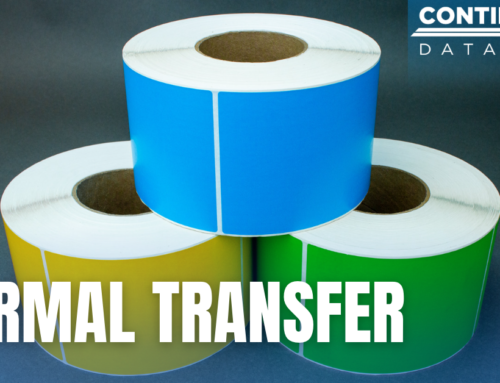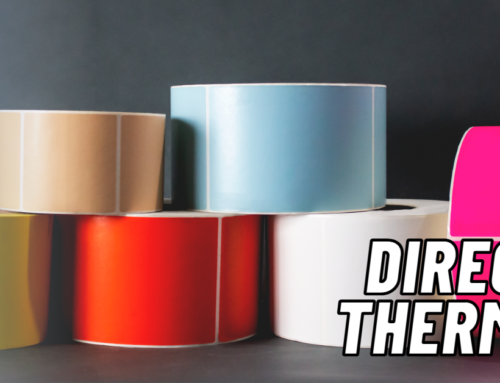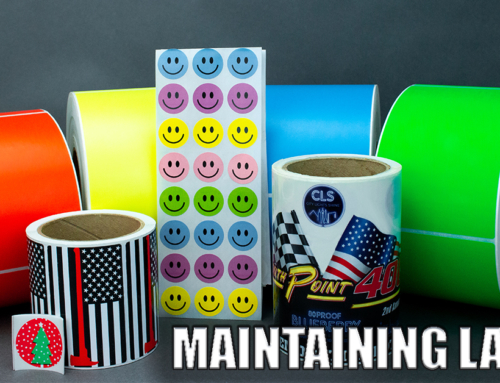HOW DO I TELL THE DIFFERENCE BETWEEN THERMAL TRANSFER AND DIRECT THERMAL LABELS?
Determining whether a label is a thermal transfer or direct thermal is easy. One simple way to identify a direct thermal label is by using your fingernail and scraping it across the labels. If the label blackens, it’s direct thermal. If not, it will be a thermal transfer label. Labels printed with a direct thermal printer do not stand up well to heat and light. Over time, the label begins to darken and the image becomes faded. Even if stored away from extreme elements, direct thermal labels typically remain scan-able for only about six months after printing. However, this lifespan is sufficient for numerous applications, such as shipping labels, visitor identification slips, receipts, and ticket printing.
Why do direct thermal labels turn black when you scratch them?
The answer lies in the specially formulated paper stock used by direct thermal printers. This stock is coated with a material that contains microscopic capsules of ink. When exposed to heat, these capsules burst, creating an image on the label.
Thermal transfer does not rely on a special heat-activated substrate. This method can accept a broader variety of “regular” label materials, including paper, polyester, and polypropylene. A label produced with the thermal transfer method will not blacken when a fingernail or other hard object is drawn across it. Thermal transfer labels are used for permanent solutions such as product identification, asset tags, tickets, and certification labels. Their durability also makes them appropriate for cold storage and outdoor applications.
HOW TO DETERMINE WHICH LABEL IS RIGHT FOR YOU?
- The advantage of using direct thermal labels is that the printing equipment is inexpensive and takes up very little space. Direct thermal printers are also portable and do not require the purchase of ribbons.
- The disadvantages of these labels include a short lifespan and extreme vulnerability to heat and light.
Uses: direct thermal labels are perfect for temporary solutions, such as event tickets, shipping, bakery, and deli labels.
- The advantage of using thermal transfer labels is that they are produced with a process that makes them resistant to chemicals, grease, solvents, heat, and moisture. They can also withstand the rigors of shipping, handling, and prolonged storage.
- The disadvantage of thermal transfer printing is that it requires the purchase of both labels and ribbons.
Uses: thermal transfer labels can be used for more demanding applications, such as certification tags, shrink wrap labeling, and warehouse tags and labels.
Why do thermal transfer printers use ribbons?
Heat plays a part in thermal transfer printing; however, the heat does not come into contact with the media. Instead, the hot printhead melts ink in the ribbon to create a sharp crisp image on the surface of the label. Heating elements inside the printhead turn on and off forming graphics, text, or barcodes.






